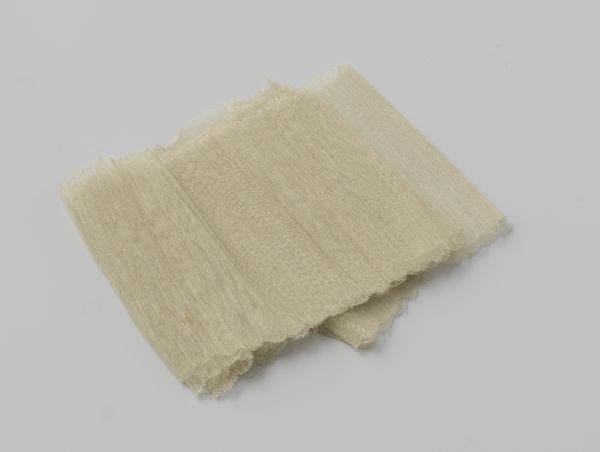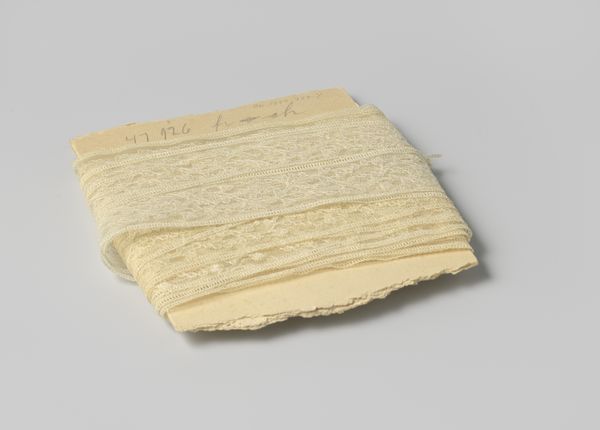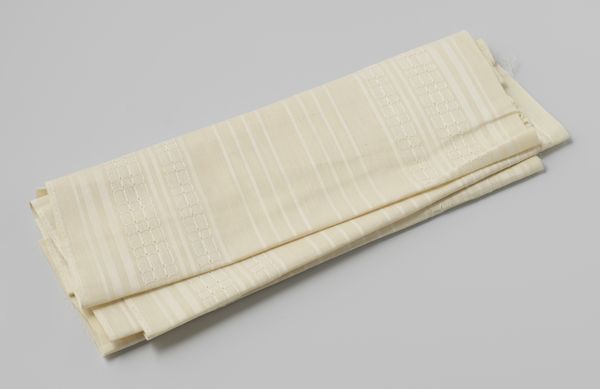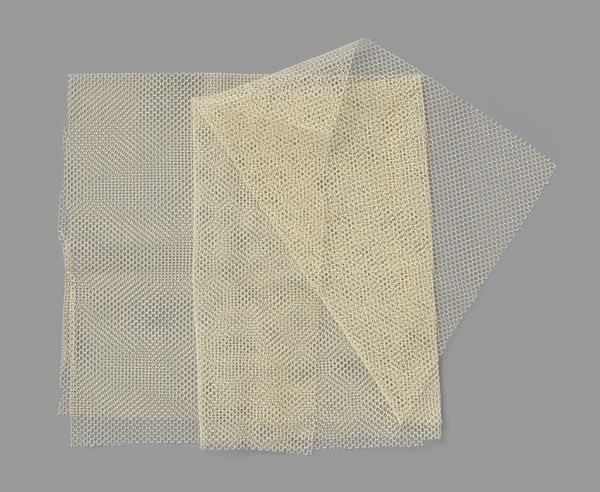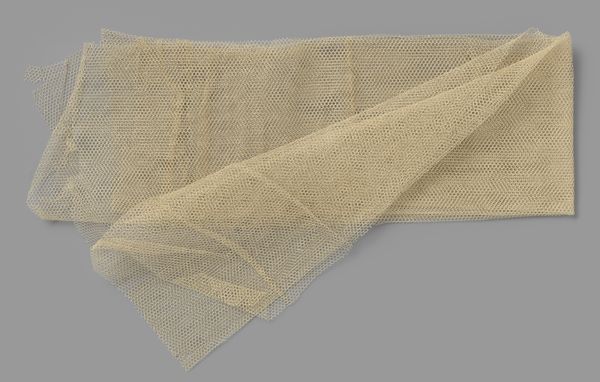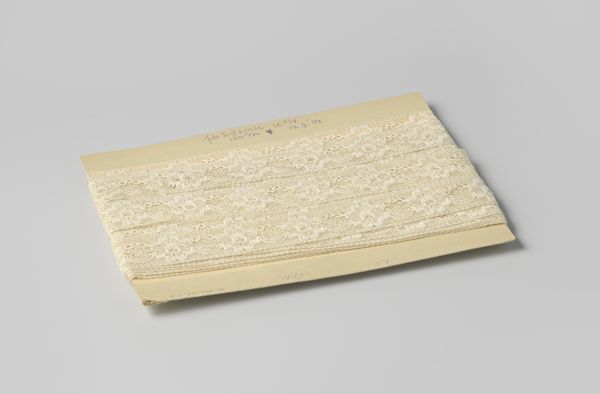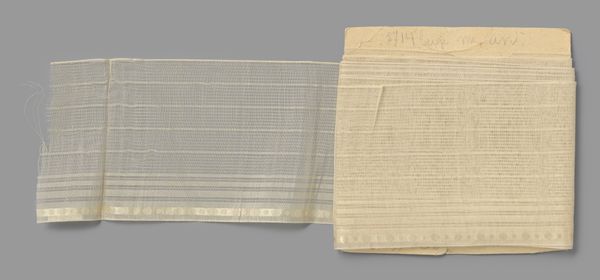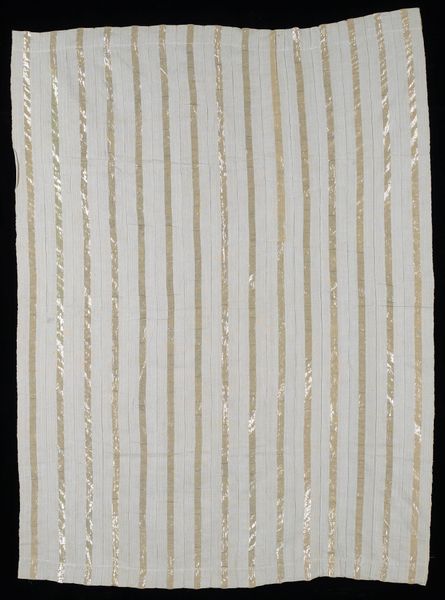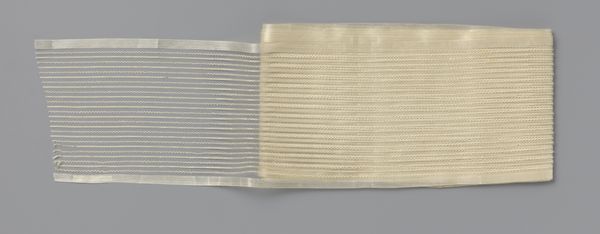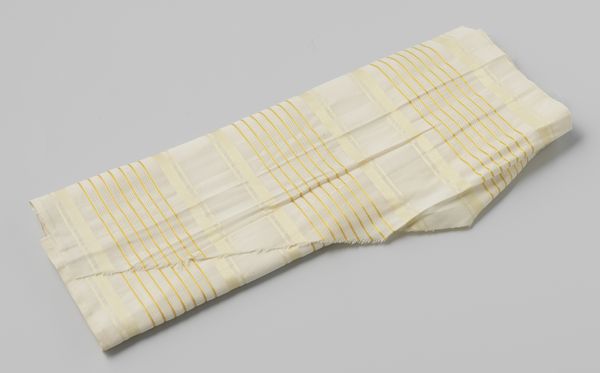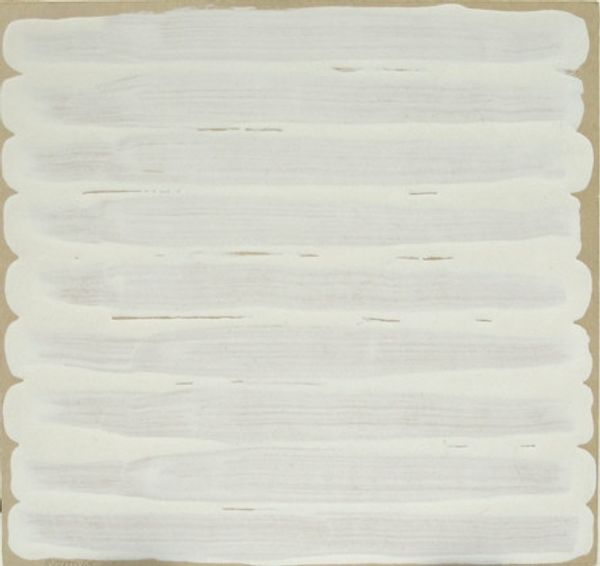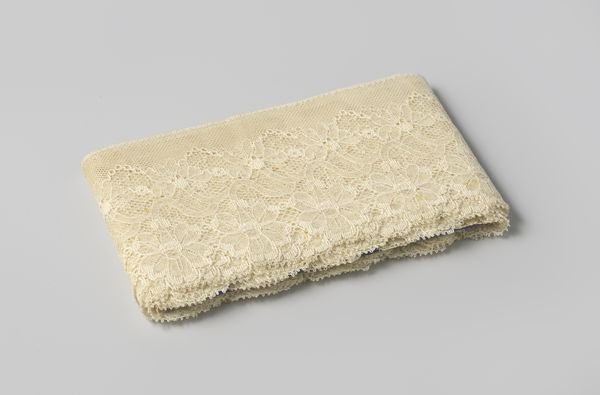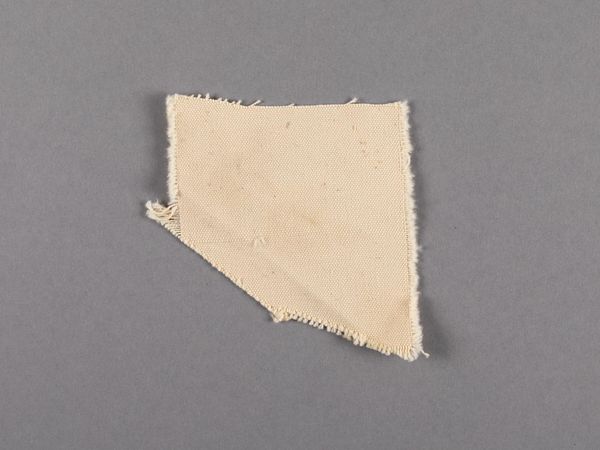
fibre-art, collage, textile
#
fibre-art
#
collage
#
textile
#
abstraction
#
cut-out
#
cutout
Dimensions: width 14 cm, length 75 cm
Copyright: Rijks Museum: Open Domain
Curator: On display at the Rijksmuseum we have "Strook parasolgaas, écru, in schulpen geknipt," an intriguing textile and collage work likely created between 1910 and 1940 by Gustav Schnitzler. Editor: My first impression is of quiet vulnerability, almost like delicate layers of skin. The écru color lends it an antique, timeless feel. What are we to make of such delicate folds? Curator: Well, it’s listed as “fibre-art," so let's consider the historical context of fiber work during that period. The early 20th century was a pivotal moment in the intersection of art and craft, particularly with women’s engagement in textiles. Editor: Interesting, and how do you believe the time period relates to a "strip of parasol gauze"? Gauze is generally associated with fragility. How does it operate beyond the tactile experience, how is meaning produced? Curator: Given the history, I interpret the abstraction in it through the politics of leisure. The work consists of a fragile, protective material but instead of protection is fragmented. Parasols in their original role were both symbols of and actual tools to enforce strict class and racial barriers against visibility and movement. Editor: Your explanation truly connects the art's form with potential statements concerning socio-political status. I hadn't viewed the parasol gauze through a class lens but, by referencing protective layers being fragmented, do you see it representing resilience too? Gauze evokes bandages as well as parasols. Curator: I do, certainly! A dual statement: Acknowledge the past and present as potentially resilient acts, an expression beyond mere elegance or delicacy, but a statement. Editor: Yes! These small symbols give the work immense potency. It reminds us that the beauty we appreciate has deep layers of thought behind it. Curator: Indeed, and that thinking is also a powerful emotional reaction. Editor: Thanks to Schnitzler, perhaps we might feel less strange now.
Comments
No comments
Be the first to comment and join the conversation on the ultimate creative platform.
